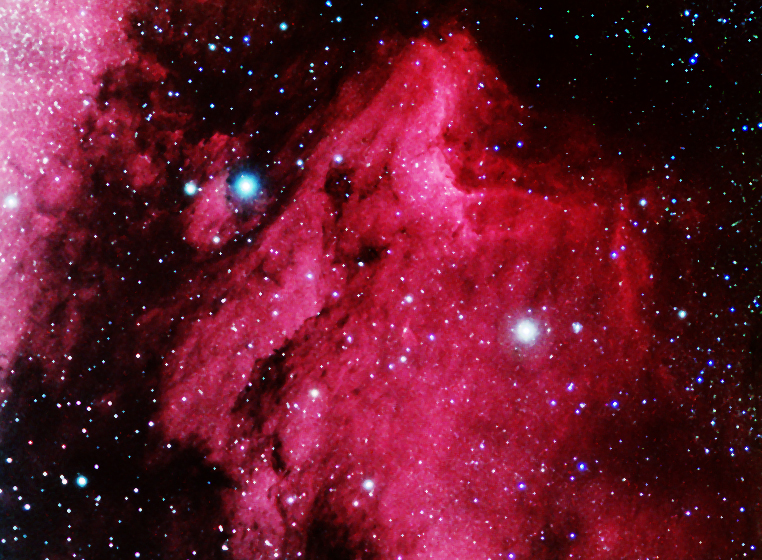
Click image to see full size
| Common Name |
Pelican Nebula |
| Formal Name |
IC 5067 |
| Date |
7/15/2006 |
| Constellation |
Cygnus |
| Location |
Eldorado, TX XBar Ranch |
| Equipment |
Tak Sky90 f4.5 flattener, mounted on Nexstar 11GPS, SBig 2000XM Camera/Filter Wheel, Astrodon Filters |
| Temperature |
-15°C |
| Exposures |
| # |
Exp (sec) |
Filter |
Bin |
Net Time (hr) |
| 3 |
600 |
Blue |
2x2 |
|
| 4 |
600 |
HAlpha (Red) |
2x2 |
|
| 3 |
600 |
Green |
2x2 |
|
| 6 |
600 |
Lum |
2x2 |
|
|
|
|
|
|
|
|
|
|
|
|
|
|
|
|
|
|
Total |
|
2.7 hrs |
|
| Processing |
Calibrated CCDSoft
Aligned in Registar
Adaptive Add Images Plus
Balanced histogram in PixInsight
Adjusted Levels, Curves in Photoshop |
| Notes |
- 1,800 light years
- The nebula itself is catalogued as IC 5070, while IC 5067 is a prominent part of it, found along the curve of the celestial pelican’s head and neck. It is a ridge of emission spanning about 10 light years, home to many newly formed stars.
- The young stars in the nebula are heating up the cold gas in their vicinity and, as a result, an ionization front gradually moves outward. A number of unusually dense filaments of cold gas are still visible, among them two jets emanating from the Herbig-Haro object 555 (HH 555) seen to the right of the Pelican eye.
www.constellation-guide.com |

